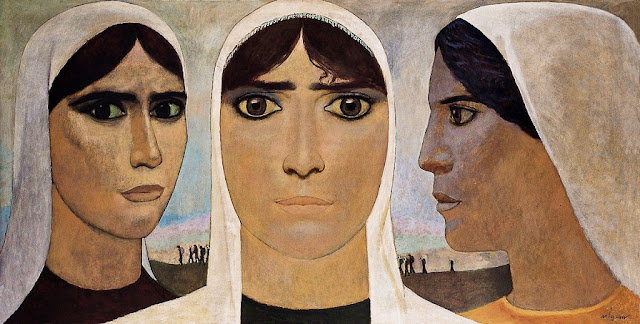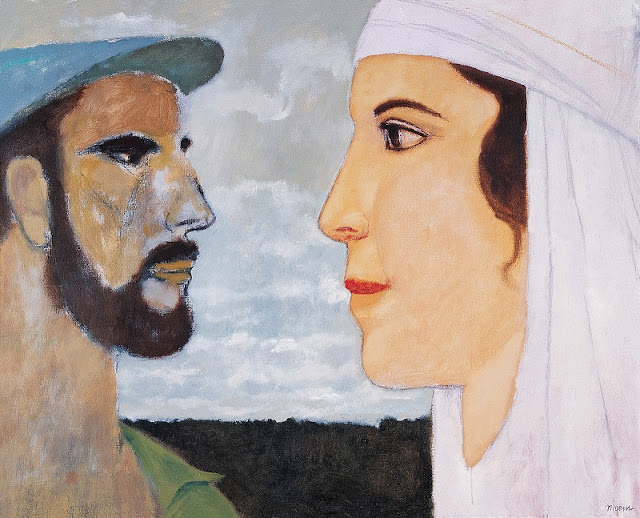Nuri İyem, (1915 - d. 18 June 2005 ) was a leading figure in the Turkish painting and social-realistic art movement.
Nuri İyem was born in Istanbul in 1915. During his childhood he used to paint walls with charcoal. Because of his father's job as a health official, İyem spent his childhood in various cities of Anatolia. After finishing primary school in Mardin, he returned back to Istanbul to attend secondary school and he studied at Vefa and Pertevniyal Highschools.
His passion to be a painter was forcing his dreams through the coasts of Fındıklı where the Fine Arts Academy stood. . Those dreams would be concluded with his enrollment at the Academy in spite of his parents' desire to see their child as a doctor.
Nuri İyem was one of the most important living masters of Turkish painting. He has produced, exhibited, written and discussed art without a break, in spite of all the difficulties to exist as an artist during the social and cultural course of the Republic period. Nuri has crowned his life with many precious art works and his own story is not just an autobiographical representation of an artist, but also an expression of real struggle and honour. More on Nuri İyem
Please visit my other blogs: Art Collector, Mythology, Marine Art, Portrait of a Lady, The Orientalist, Art of the Nude and The Canals of Venice, Middle East Artists, 365 Saints, 365 Days, and Biblical Icons, also visit my Boards on Pinterest
Images are copyright of their respective owners, assignees or others.
Some Images may be subject to copyright
I don't own any of these images - credit is always given when due unless
it is unknown to me. if I post your images without your permission, please tell
me.
I do not sell art, art prints, framed posters or reproductions. Ads are
shown only to compensate the hosting expenses.
If you enjoyed this post, please share with friends and family.
Thank you for visiting my blog and also for liking its posts and pages.
Please note that the content of this post primarily consists of articles
available from Wikipedia or other free sources online.



















